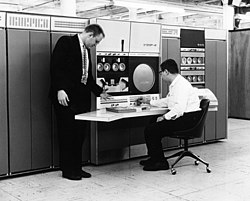
This is a list of transistorized computers , which were digital computers that used discrete transistors as their primary logic elements. Discrete transistors were a feature of logic design for computers from about 1960, when reliable transistors became economically available, until monolithic integrated circuits displaced them in the 1970s. The list is organized by operational date or delivery year to customers. Computers announced, but never completed, are not included. Some very early "transistor" computers may still have included vacuum tubes in the power supply or for auxiliary functions.











